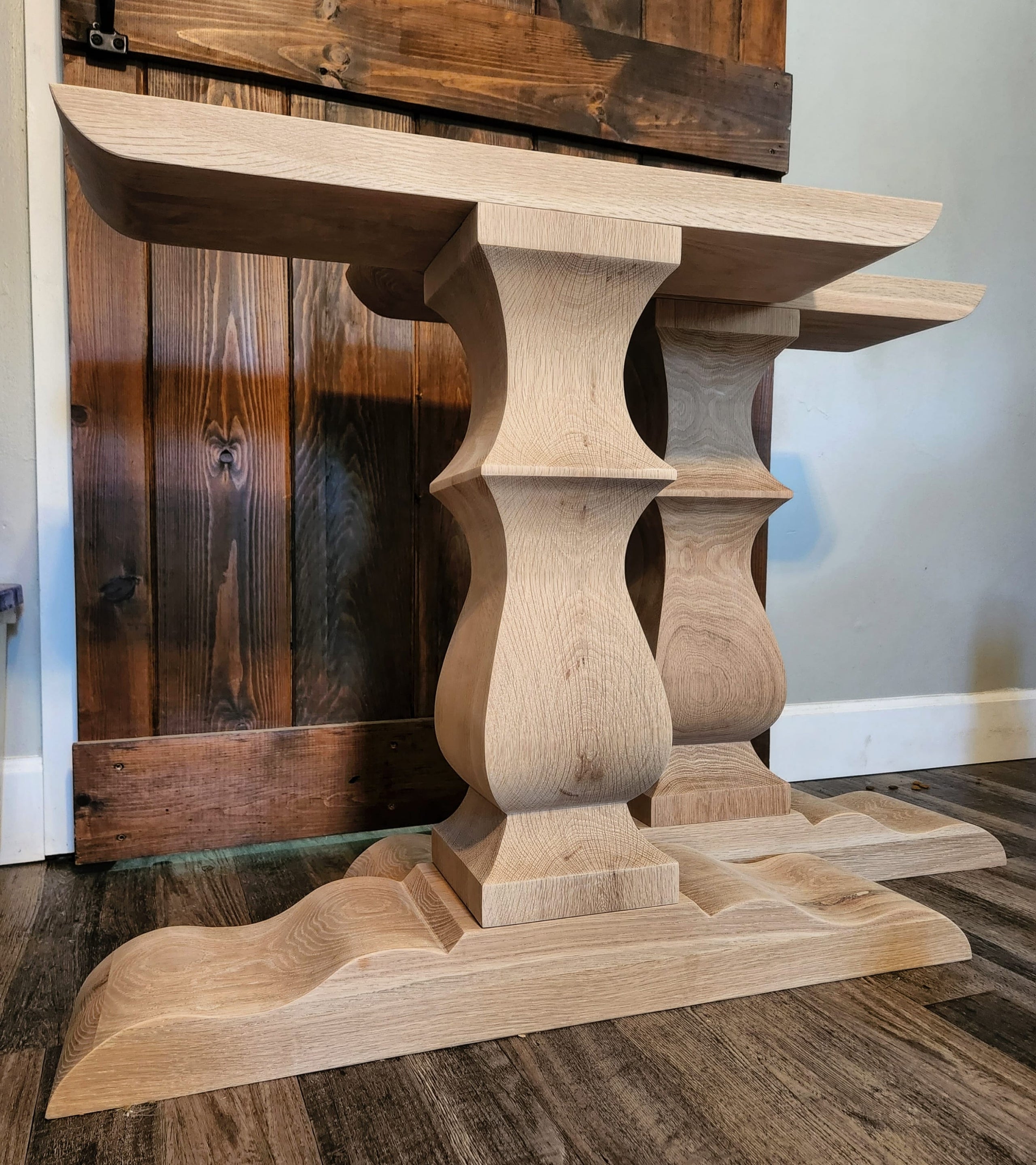Checking Out Different Styles for Dining Room Table Legs to Match Your Aesthetic
Checking Out Different Styles for Dining Room Table Legs to Match Your Aesthetic
Blog Article
A Detailed Consider Eating Table Leg Styles: Discovering the Ideal Match
Picking the ideal table leg style is important for both visual charm and functional performance. Traditional 4 legs offer ageless beauty and security, while the pedestal base provides increased legroom and a modern appearance. For those with larger tables, trestle legs make certain sturdy support, whereas barrette legs introduce a mid-century modern ambiance with their minimalist layout. The x-shaped legs blend modern style with improved security. Each of these alternatives brings one-of-a-kind advantages, making the selection greater than just an issue of preference. Discover even more to find which design flawlessly complements your eating space and way of life.
Standard Four Legs
Among the different types of dining table leg designs, the traditional four-leg style remains a classic choice for many households. Four legs supply well balanced support, ensuring the table remains secure and capable of bearing considerable weight (dining room table legs).
From an aesthetic point of view, the typical four-leg design can be easily adapted to numerous interior styles. Whether crafted from wood, steel, or a combination of products, these legs can be intricately carved, sleek and minimalistic, or anything in between. Their flexibility enables them to match both rustic and contemporary settings flawlessly.
In addition, the straightforward framework of the four-leg style promotes ease of movement and positioning within a space. Unlike more facility bases, this style decreases obstructions, offering ample legroom for diners. In summary, the standard four-leg eating table leg design weds withstanding style with sensible performance, making it an astute selection for those seeking both type and function in their eating furniture.
Stand Base
Often celebrated for its stylish and space-efficient design, the pedestal base is a distinguished option to the standard four-leg setup in dining table leg styles. Without corner legs, diners are paid for higher freedom of activity, making it an ideal choice for round and oval tables that promote more intimate and inclusive gatherings.
The central column itself provides a canvas for intricate designs and creative expressions, including a component of aesthetic passion underneath the table. In summary, the stand base combines capability with design, making it an improved and sensible alternative for diverse dining settings.
Trestle Legs
Trestle legs provide a robust and classic structure for dining tables, characterized by their straight cross-bracing and strong support beam of lights. Originating from middle ages times, this style has progressed yet retained its essential framework, making it a seasonal fave in both conventional and modern settings. The main trestle beam, commonly sustained by 2 or more vertical blog posts, uses exceptional security, enabling for larger table sizes without the need for added legs.
A substantial advantage of trestle leg tables is the ample legroom they supply. Unlike tables with 4 corner legs, the absence of blockages at the table's sides supplies unobstructed area for chairs and restaurants, enhancing comfort and availability. This makes trestle tables perfect for accommodating larger celebrations, whether in a dining area or a reception hall.
The visual convenience of trestle legs is notable. Offered in a variety of products such as timber, steel, and composite, they can be ended up to match a variety of indoor styles. From rustic farmhouse to smooth modern styles, trestle legs can be tailored to match specific preferences. Their long-lasting allure and useful advantages make trestle legs a compelling choice for those looking for both style and usefulness in their table.
Barrette Legs

The allure why not look here of hairpin legs depends on their simplicity and convenience - dining room table legs. Available in a variety of products, including steel and brass, they can be finished in countless shades to complement different indoor designs. Whether combined with a rustic wooden table top or a contemporary glass surface, barrette legs effortlessly blend capability with a touch of classic charm
Longevity is an additional noteworthy function of hairpin legs. In spite of their delicate look, these legs are engineered to birth significant weight, ensuring the table stays stable and secure. Furthermore, they are relatively simple to install, making them a read the full info here preferred choice for do it yourself enthusiasts and professional furnishings manufacturers alike.
X-Shaped Legs

Built from products such as steel, wood, or a combination of both, X-shaped great post to read legs can be customized to match different style preferences. Steel legs commonly offer a smooth and industrial feel, suitable for loft-style apartments and modern dining areas.
Additionally, the engineering behind X-shaped legs makes certain also weight circulation, lessening the risk of wobbling and enhancing longevity. This makes them specifically well-suited for larger table that need additional assistance. Basically, X-shaped legs mix useful design with contemporary aesthetic appeals, making them an ageless selection for diverse eating atmospheres.
Conclusion
A comprehensive understanding of eating table leg styles exposes the distinct qualities and benefits of each layout. Trestle legs ensure robust support for bigger tables, and hairpin legs present a mid-century modern aesthetic.
Report this page